A restomod of the highest order, RML’s SWB is more than just a rebodied Ferrari 550
It’s been over a year since we first went behind the scenes of RML’s fascinating Short Wheelbase project. Since then much has happened. So much, in fact, that we rejoin the team at the Millbrook Proving Ground, where ‘Car Zero’ is undergoing detailed set-up work and extensive accelerated reliability and durability testing.
Between that first visit to the studio and this test drive at Millbrook, we’ve visited RML’s Wellingborough HQ on a number of occasions to see Car Zero in build. As it has progressed, it’s clear the project is something that the wider RML workforce has embraced. When it was ready to be started for the first time, everyone in the building gathered round. Michael Mallock made a short speech, and then it was wall-to-wall smiles as the starter motor span the 5.5-litre V12 into life.
It was a modest yet momentous milestone in RML usually undertakes projects on behalf of clients, and often in secret; rarely do ‘white label’ engineering companies like this get to publicly showcase what they can do. So the Short Wheelbase was a great way to flex a bit of muscle and explore a bespoke project, freed from third-party objectives. But what exactly is the nature of this car?
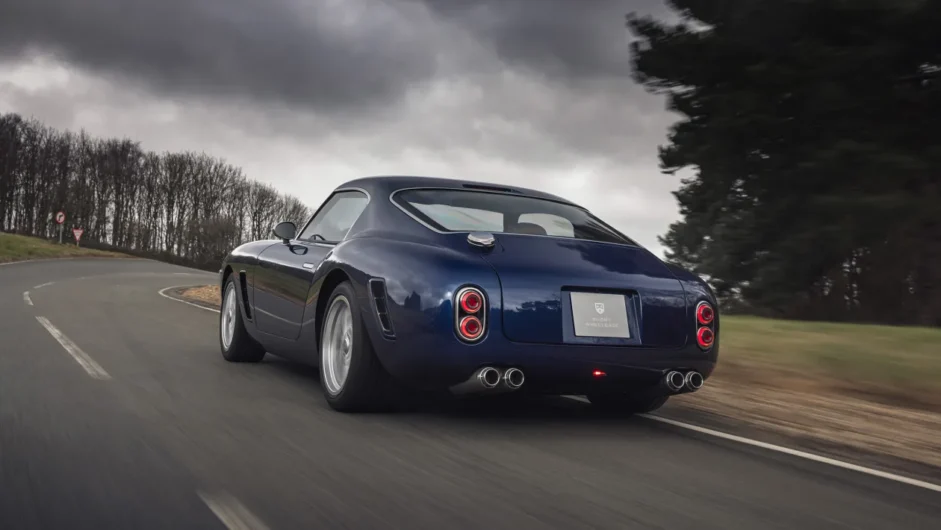
Restomodding is a vibrant scene, but the Short Wheelbase doesn’t really suit that label. In truth it’s more of a retromod than a restomod, the objective being not to take a 550 Maranello and make it go like an 812 Superfast, but to modify the underlying monocoque to accept a state-of-the-art carbonfibre body structure styled in the curvy, pre-downforce manner of a late-’50s Ferrari 250 GT Short Wheelbase, and refit the interior to suit.
Like most apparently straightforward challenges, this transformation is far more complex than it sounds – at least if it is to be executed to the same quality, safety and durability standards as an OE manufacturer. For the Short Wheelbase to be viable as a project and desirable for its target customers it had to preserve the proven reliability and functionality of the 550M. In powertrain terms, this means no pursuit of additional power and torque, but simply a full rebuild and dyno test of the engine to make sure all the prancing horses are present and correct.
RML rightly didn’t want to mess with the ABS and traction control systems, but things like the engine cooling system had to be completely redesigned to package no fewer than five separate radiators (for engine water and oil, gearbox and PAS coolers plus a further condenser for the HVAC system) into the much-reduced space forward of the engine. Millbrook sessions will test the basics, but subsequent sessions in MIRA’s Climatic Wind Tunnel will test the thermal capacity of the cooling systems to ensure they can cope with Dubai in high summer.
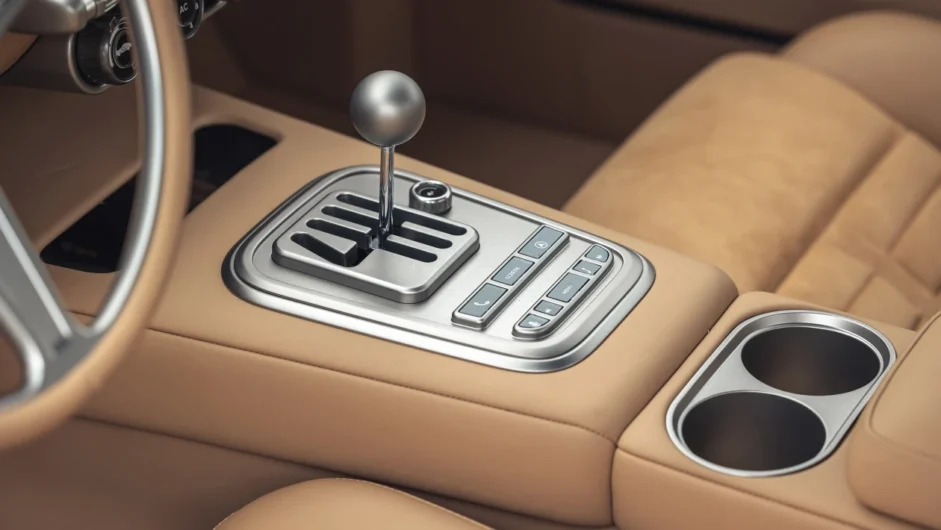
Similarly, the two-piece carbonfibre clamshell body has been subjected to demanding roof crush tests, with a 23.9kN load applied to the structure. Well within industry deflection limits, the new body is so strong that it requires no additional rollover structure, thereby avoiding overly thick roof pillars that would be anathema to any design inspired by the thin-pillared original.
It’s one thing seeing a car, especially one made from clay, in the isolation of a design studio, but quite another seeing the fully built version in the wild. Nosed out from its workshop bay, the Tour de France blue RML Short Wheelbase suddenly seems very real.
Considering this is the very first car built, it’s no rough and ready mule, though it is reliant upon a number of rapid-prototyped components. The brightwork isn’t representative of final sign-off production parts and there are plenty of pieces within the cockpit that are interim in terms of final fit and finish.
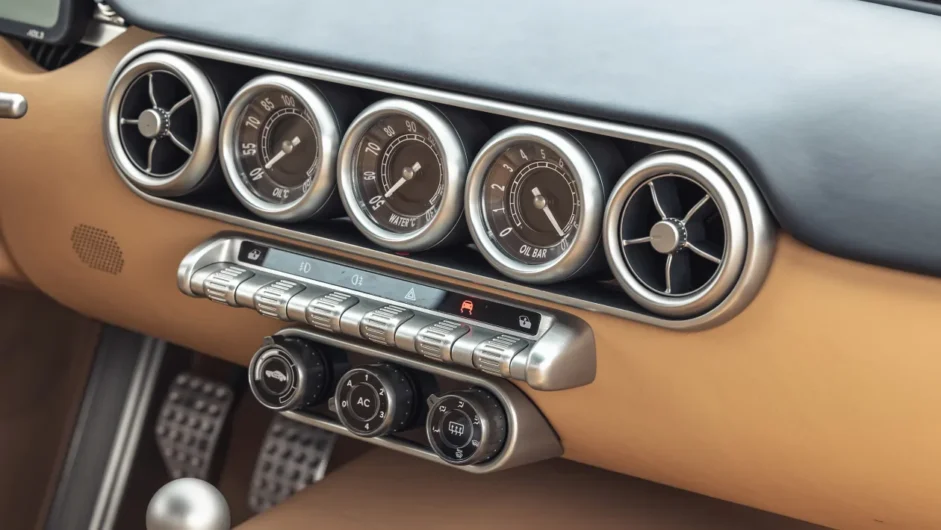
So complete is the exterior and interior reworking that pretty much all signs of the underlying 550 Maranello have been erased, save the lovely cast alloy pedals and iconic open-gated gearshift. RML has been smart to remove the tell-tale visual giveaways of the Short Wheelbase’s origins, for as soon as you open the door you immediately feel like you’re entering a bespoke machine.
First impressions are of space and simplicity, combined with a car that feels both compact and comfortable. The shallow dash brings you closer to the windscreen, so you get a lovely view down the bonnet. Analogue instruments made specially for the car are calming on the eye and contribute to a classical cockpit that’s clear and intuitive to use. Ample headroom means 2m tall drivers (such as Michael Mallock, funnily enough) have plenty of room to stretch out and get themselves set behind the delicate, thin-rimmed steering wheel. In terms of occupant comfort for an upper percentile-sized driver and passenger, it’s a world away from the original 250. AdvertisementAdvertisement – Article continues below
It’s been a while since I’ve driven a 550 Maranello, but there’s a sweet familiarity to the way the big V12 spins into life, though the Short Wheelbase sounds far better exhaling through RML’s bespoke and fully road-legal system than the factory Ferrari ever did. Where the 550M’s voice was a muted, turbine-like thrum, the Short Wheelbase’s is much more sonorous. Vocal without being shouty or contrived, it sounds authentic and exciting but stops well short of being boorish.
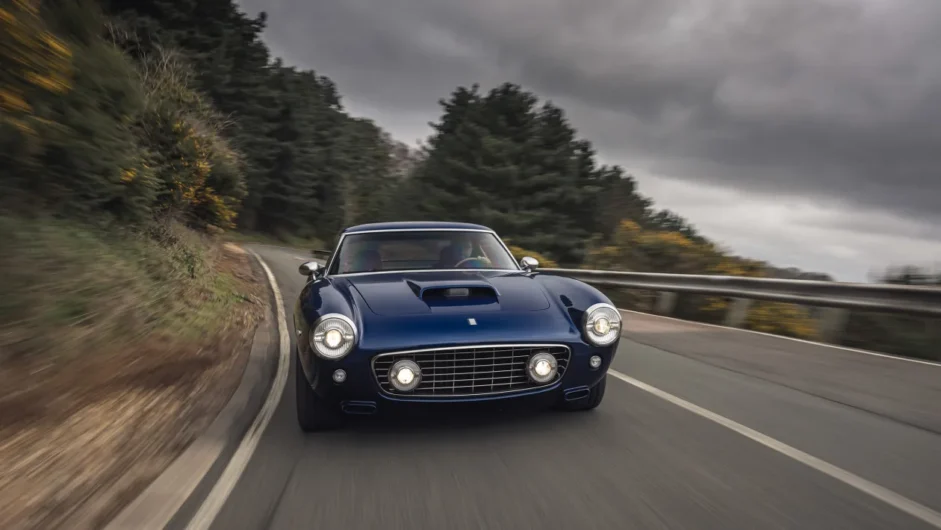
We head first to Millbrook’s mile straight, where we’re able to gun through the gears. It’s a superb sensation to slot first gear and pull briskly away, feeling the shove from a wonderfully smooth and tractable big capacity V12, each upshift bringing a brief punctuation to the otherwise relentless onward rush.
Without the reference points of a regular road, it’s hard to place the Short Wheelbase’s straight-line pace in a modern context. It certainly doesn’t have the crazy ballistics of today’s supercars, but it really romps along, with an endless elasticity that’s highly seductive. We’ve grown used to Ferrari V12s being manic and feral in the manner of an F12 or 812, but the 550M’s V12 is made of more subtle and, dare I say, cerebral stuff. And, because you’re working through the gearbox manually, each ratio truly offers something to savour. As does the process of smoothly slotting each upshift and sweetly timing your blip-shifts on the way down. This is driving as it used to be.
Though weight has been saved – the carbonfibre body is approximately 30kg lighter than the original alloy panels – the Short Wheelbase is no flyweight, RML claiming 1470kg without fluids. That will disappoint some (the 1950s original was in the region of 1000-1100kg), but the high levels of equipment and sumptuous finish of the interior always meant this car was very much intended to be Lusso rather than Competizione.
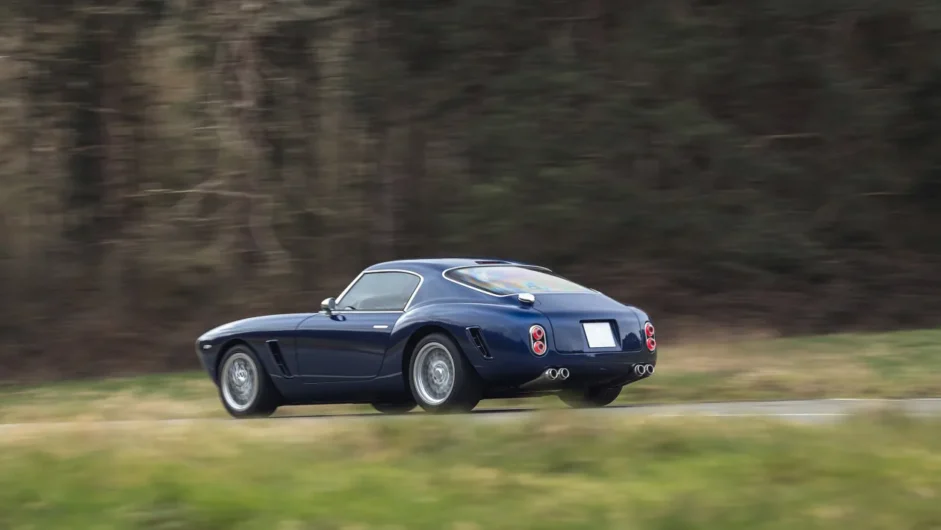
Whichever way you slice it and by whichever era you judge it, 500bhp from a big-capacity naturally aspirated V12 feels special. As it transpires, the Short Wheelbase isn’t quite giving full-throttle today – something RML will discover after our drive – so it will feel even more impressive at the top end once we drive the finished article.
After the Mile Straight we head for Millbrook’s Hill Route. Imagine Gran Turismo’s Trial Mountain built into the Bedfordshire countryside and you’re not far off. This sinuous stretch of test track is packed with whoops, crests and compressions that really test a car’s damping (and your stomach), and with zero margin for error you drive it very much in the manner of a British B-road. Albeit one with no risk of getting done for speeding.
It’s for this kind of driving that Michael Mallock conceived the Short Wheelbase – well, this and grand touring, something we hope to do when the car is signed-off – so it’s satisfying to find it feels in its element. At this stage in its development, RML’s drivers have simply been establishing that their baseline settings are sound, and that everything is talking to everything else systems-wise. That means there’s still some work to do in terms of adding some weight to the currently somewhat light power-assisted steering (there’s some scope for this within Ferrari’s PAS ECU) and dialling-in a little more support to the suspension via the adjustable Öhlins dampers, re-rated springs and anti-roll bars, all of which have replaced the 550M’s standard-fit items.
As a car-savvy reader of evo, you’ll know that development drives are not unusual, but testing a car so soon after its first start-up most certainly is. Normally by the time a manufacturer lets the media near a development prototype they’re near-as-dammit done, bar peeling off the camouflage wrap. RML’s car might not be wearing any disguise, but there is plenty of detail work to be done.
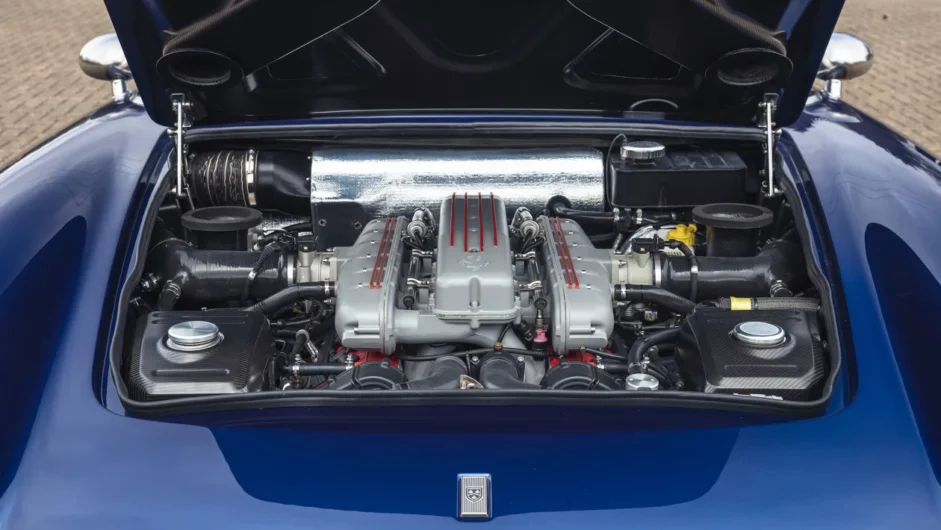
Nevertheless, despite limited time to really dig into the set-up, the Short Wheelbase immediately feels poised and supple. The most abrupt compressions lead to some bottoming out, but the area of the car was quickly identified, while further suspension tweaks will introduce a little more support without harming ride quality.
The aforementioned power steering could do with a bit more meat, as there’s not enough feel or weight to lean against as you first introduce load into the chassis, but once you’ve initiated that first split-second of direction change there’s decent lateral grip and a pleasing sense of accuracy that quickly builds your confidence. Again, with suspension set-up changes and some interrogation of the PAS ECU map, RML is confident more feel and weight can be found.
Perhaps the most important take-home from this test is that the Short Wheelbase is very much its own car in terms of the driving experience. It genuinely never occurs to me that I’m specifically driving a Ferrari – you just know you’re enjoying a really appealing car. One with a fabulous powertrain, impressive dynamic and structural integrity and, most pleasingly, a low-pressure, high-reward manner of making progress.
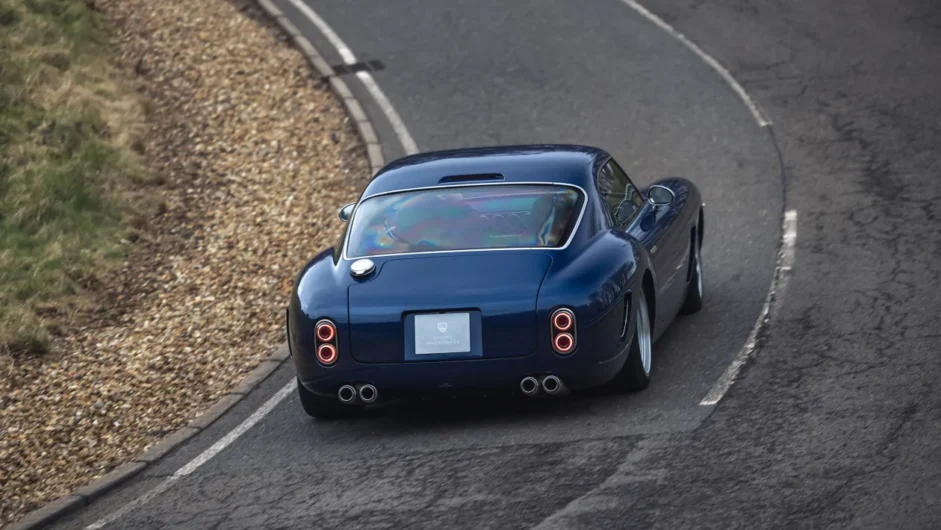
Prices and rivals
Inevitably not everyone will ‘get’ what the Short Wheelbase is about. As with many of these modern reimaginings, the inherent appeal of the donor car combined with the enormous cost of turning it into something else seems crazy. When that base car happens to be a Ferrari 550 Maranello, that argument is impossible to duck. Especially when the asking price ($1.51million plus local taxes, so $1,181,000 in the UK) means you could almost certainly own an F40, a Daytona and a 550 Maranello for similar money.
You won’t find anyone arguing with that logic at RML, but the truth is the customers who are signing on the dotted line already have extensive car collections and more than enough money to commission RML to build them a Short Wheelbase.
Having sampled – and thoroughly enjoyed – Car Zero in its nascent state, I’m very glad there are people out there who are open-minded enough to support such projects, for if this ‘85 per cent there’ iteration is anything to go by, once that last 15 percent of poise, precision and feel has been finessed it will be a genuinely cracking car to drive. One that’s distinct from the donor 550 Maranello in both character and capability, and which remains true to Michael Mallock’s appealing vision of a car that delivers old-school GT performance to be enjoyed on the road at less than lunatic speeds.
Specs
| Engine | V12, 5474cc |
| Power | 478bhp @ 7000rpm |
| Torque | 420lb ft @ 5000rpm |
| Weight | 1470kg (dry) |
| Power-to-weight | 330bhp/ton (dry) |
| 0-100kph | c4.0sec |
| Top speed | c298kph |
| Base price | $1,809,000 |
This article originally appeared at evo.co.uk
Copyright © evo UK, Autovia Publishing
